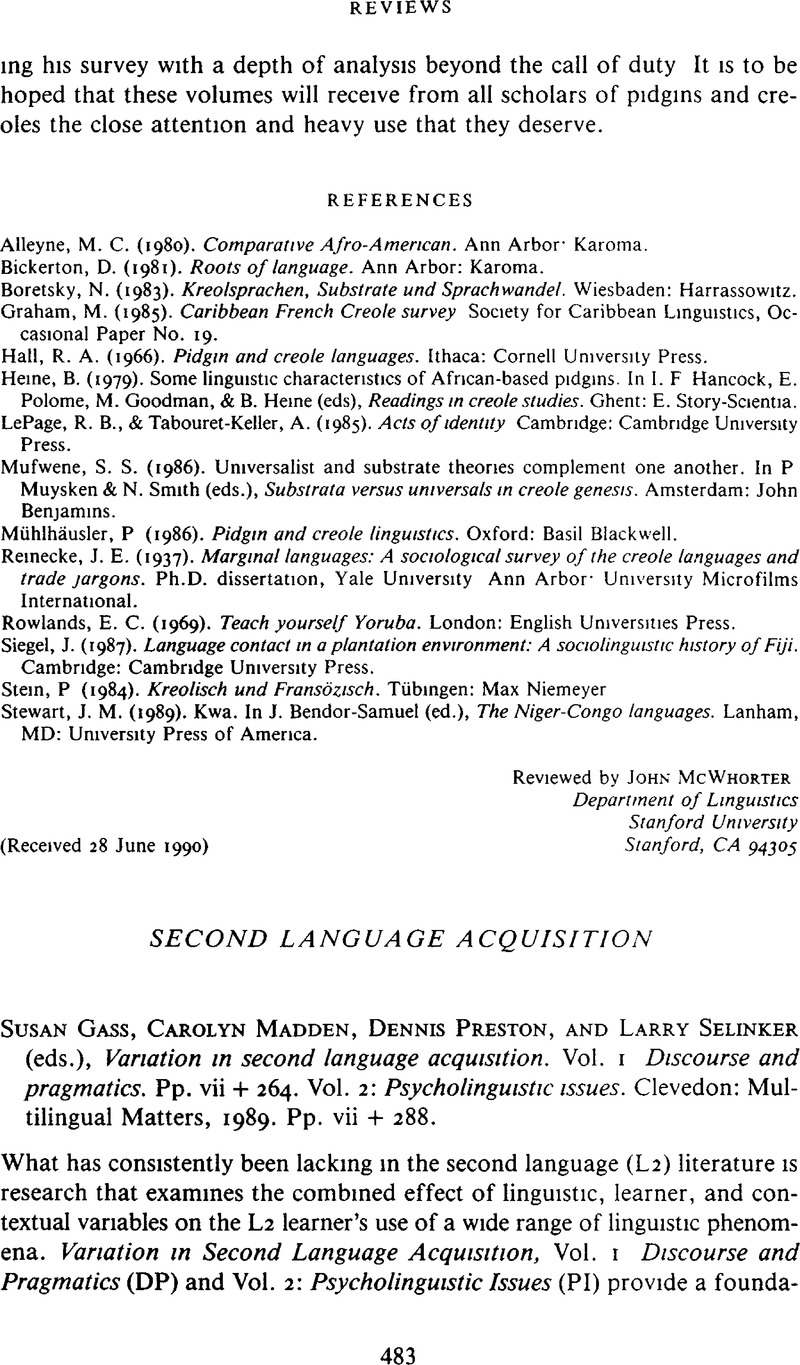No CrossRef data available.
Article contents
Second Language Acquisition - Susan Gass, Carolyn Madden, Dennis Preston, and Larry Selinker (eds.), Variation in second language acquisition. Vol. 1Discourse and pragmatics. Pp. vii + 264. Vol. 2: Psycholinguistic issues. Clevedon: Multilingual Matters, 1989. Pp. vii + 288.
Review products
Susan Gass, Carolyn Madden, Dennis Preston, and Larry Selinker (eds.), Variation in second language acquisition. Vol. 1Discourse and pragmatics. Pp. vii + 264. Vol. 2: Psycholinguistic issues. Clevedon: Multilingual Matters, 1989. Pp. vii + 288.
Published online by Cambridge University Press: 05 January 2009
Abstract
An abstract is not available for this content so a preview has been provided. Please use the Get access link above for information on how to access this content.

Information
- Type
- Book Review
- Information
- Copyright
- Copyright © Cambridge University Press 1991
References
REFERENCES
Adamson, H. D. (1988). Variation theory and second language acquisition. Washington DC. Georgetown University Press.Google Scholar
Brown, G. (1989). Making sense: The interaction of linguistic expression and contextual information. Applied Linguistics 10(I):97–108.Google Scholar
Cummins, J. (1989). Empowering minority students. Sacramento: California Association of Bilingual Education.Google Scholar
Eisenstein, M. (1989). The dynamic interlanguage: Empirical studies in second language variation. New York: Plenum.Google Scholar
Ellis, R. (1987). Second language acquisition in context. London: Prentice Hall International.Google Scholar
Ellis, R. (1988). The effects of linguistic environment on the second language acquisition of grammatical rules. Applied Linguistics 9(3):257–74.Google Scholar
Gattegno, C. (1963). Teaching foreign languages in schools: The silent way 2nd ed.New York: Educational Solutions.Google Scholar
Gattegno, C. (1976). The common sense of teaching foreign languages. New York: Educational Solutions.Google Scholar
Huebner, T. (1985). System and variability in interlanguage syntax. Language Learning 35:141–63.Google Scholar
Hymes, D. (1972a). Models of the interaction of language and social life. In Gumperz, J. J. & Hymes, D. (eds.), Directions m sociolinguistics. New York: Holt, Rinehart and Winston. 35–71.Google Scholar
Hymes, D. (1972b). On communicative competence. In Pride, J. B. & Holmes, J. (eds.), Sociolinguistics: Selected readings. Harmondsworth: Penguin. 269–93.Google Scholar
Littlewood, W. (1981). Communicative language teaching. Cambridge: Cambridge University Press.Google Scholar
Ogbu, J. U., & Matute-Bianchi, M. E. (1986). Understanding sociocultural factors: Knowledge, identity, and school adjustment. In Beyond language: Social and cultural factors in schooling language minority students. Developed by the Bilingual Education Office, California State Department of Education. Los Angeles: Evaluation, Dissemination, and Assessment Center, California State University 73–142.Google Scholar
Scarcella, R., Andersen, E., & Krashen, S. (1990). Developing communicative competence in a second language. New York: Harper & Row/Newbury House.Google Scholar

